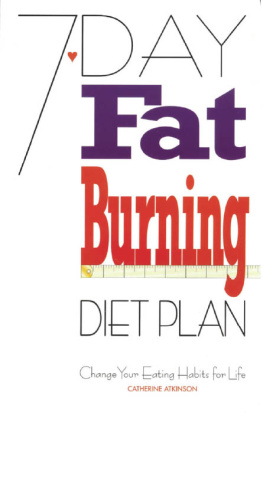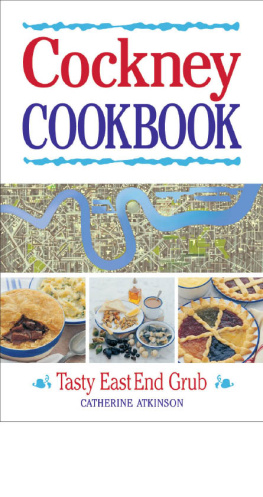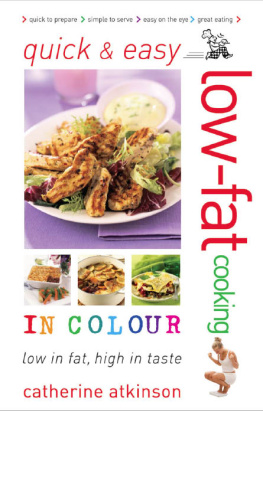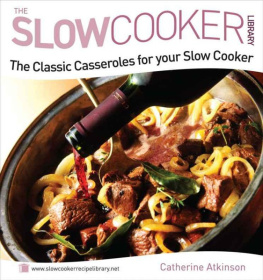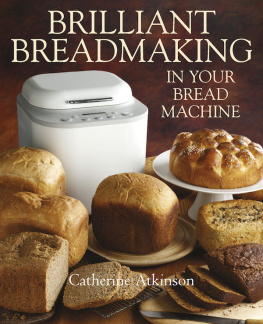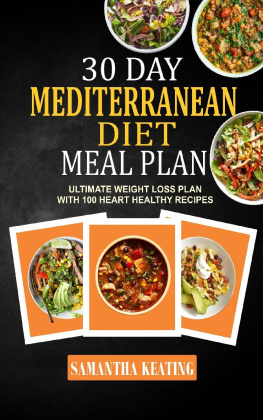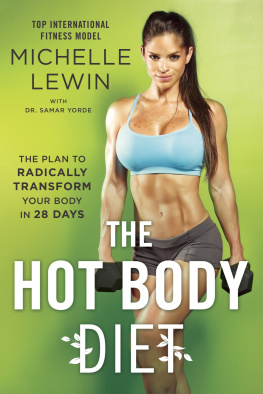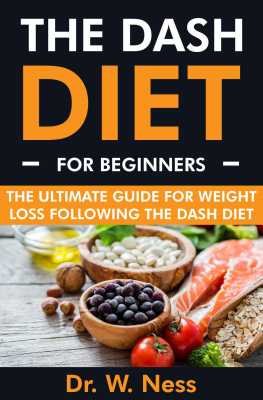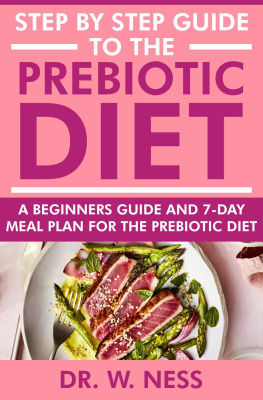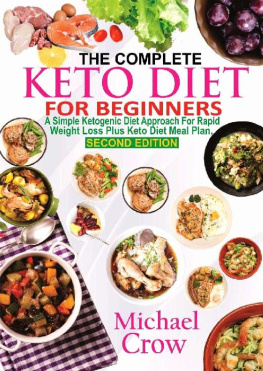First published in Great Britain in 2000 by W. Foulsham & Co. Ltd
Copyright 2000 W. Foulsham & Co. Ltd
The Copyright Act prohibits (subject to certain very limited exceptions) the making of copies of any copyright work or of a substantial part of such a work, including the making of copies by photocopying or similar process. Written permission to make a copy or copies must therefore normally be obtained from the publisher in advance. It is advisable also to consult the publisher if in any doubt as to the legality of any copyright which is to be undertaken.
Neither the editors of W. Foulsham & Co. Ltd nor the author nor the publisher take responsibility for any possible consequences from any treatment, procedure, test, exercise, action or application of medication or preparation by any person reading or following the information in this book. The publication of this book does not constitute the practice of medicine, and this book does not attempt to replace your doctor. The author and publisher advise the reader to check with a doctor before administering any medication or undertaking any course of treatment or exercise.
W. Foulsham & Co. Ltd
Introduction
Almost half the adult population in the Western world is overweight, and one in three women and one in five men are on a diet at any time yet most fail to lose the desired weight or simply put it all back on within a few months. Not only that, but heart disease is rampant, and one of the main culprits is our fat-heavy diet.
Cheer up! Whether youre slimming for the first or fiftieth time, or whether you have been advised by your doctor or dietician to reduce your fat intake and follow a fat-burning diet, this carefully structured plan offers you an easy introduction to a way of eating that will result in permanent weight loss because it will offer your body the right nutrients in the right quantities and balance. Forget about food fads and crash diets they dont work. You have to change the way you eat.
The good news is just a glance through the inventive and inspiring recipes in this book will persuade you that it will be a change for the better in every respect. With over 100 stunning recipes, you can eat well and wisely without denying yourself the foods you love. Simply use the seven-day plan to get you started and you need never look back.
WHAT IS THE FAT-BURNING DIET?
Theres no doubt that very low-calorie diets can result in rapid weight loss, but the idea that the body can lose up to 3 kg/7 lb of fat in a week is ridiculous maximum fat loss is unlikely to be more than 900 g/2 lb any further weight loss shown on the scales will just mean that your body is retaining less water. Another big problem with diets below 1,000 calories a day is that they trigger the bodys defence mechanisms so that it treats this reduction of food as a threat and may slow its metabolic rate (the rate at which you burn up calories) by as much as 45 per cent. This means that if you return to your old style of eating, you are likely to regain weight rapidly, not to mention the fact that the old habits were responsible for your weight or health problems in the first place, so you may end up back where you started.
Its not just how much or little food that makes the difference to your weight, but the kind of food you eat.
Most of us eat much more saturated fat and sugar and much less starch (complex carbohydrates) than we should. The average person gets about 40 per cent of their daily calories from fat, about 12 per cent from protein and 48 per cent from carbohydrates. For a healthy diet, no more than 30 per cent of the calories in your diet should come from fat, around 15 per cent from protein and at least 55 per cent (and preferably much more) from carbohydrates, ideally complex carbohydrates.
The fat-burning diet combines carbohydrates, proteins and fats in these correct proportions to maximise the bodys fat-burning potential and also ensures a sufficiently high calorie intake to avoid a drop in metabolic rate. In that way, it ensures a steady weight loss for those who are overweight, and provides a balanced diet to maintain good health.
A HEALTHY BALANCE
For any good diet, it is essential to ensure that you have a balanced intake of all the essential food types. This chapter will guide you towards a healthy, balanced diet, either to help you lose weight, or to help you keep your weight at an optimum level and improve your overall health.
CARBOHYDRATES
Not so long ago, all carbohydrates were considered fattening and were the first items to be cut from a slimming diet. We now know that this was wrong. There are two forms of carbohydrate sugars (simple carbohydrates) and starches (complex carbohydrates); both contain about 4 calories per gram but they are quite different in the way they work in your body.
When the level of glucose in your bloodstream drops, you feel hungry. If you eat simple carbohydrates such as sugar, honey, syrup, treacle, glucose or fructose these blood sugar levels rapidly increase and you get a surge in energy, but this is followed by a slump in energy to a level even lower than the original low that caused the craving, so you feel hungry again. So not only do simple carbohydrates create this glucose roller-coaster which plays havoc with the appetite, they contain only empty calories: lots of calories but no nutritional value.
The Glycaemic Index (GI) is a measure of how quickly a food releases its energy and raises your blood sugar level: the higher the GI, the higher the food raises your blood sugar level. A slow increase in blood sugar is healthier than a sudden rise. Foods with a low GI can therefore help control the appetite.
What we need to do, therefore, is to eat foods which help to maintain a steady level of glucose in the bloodstream and provide the essential energy and nutrients the body needs. These foods are the complex carbohydrates starchy foods such as grains, potatoes and pasta, which are the ideal fat-burning foods. They release energy slowly as they are digested and keep hunger at bay for longer. They also contain the B group of vitamins which help to release energy and combat stress. Meals high in complex carbohydrates raise the metabolic rate of overweight people more than meals that have an identical number of calories but contain mainly proteins and fats. Many athletes improve their endurance by carbohydrate loading before a race. The body converts the starches into glucose in the bloodstream, which gives instant energy, and into glycogen, which provides stored energy. Of all the starchy staples, pasta has the lowest GI score, closely followed by vegetables, rice and bulgar (cracked) wheat.
For a healthy diet, you should therefore reduce your sugar intake and include plenty of starches from a variety of sources.
EASY WAYS TO CUT DOWN ON SUGAR
Theres no need to cut out high-sugar foods altogether, but do try to cut down gradually so that eventually you get used to eating less sugar. Try these simple ways of reducing your sugar intake.
- If you add sugar to tea and coffee or breakfast cereals, add a little less every day until you can manage without, or use artificial sweeteners if you must.
- Buy low-calorie mixers and drinks or, better still, mineral or soda water, which can also be used to dilute white wine and fruit juices.

